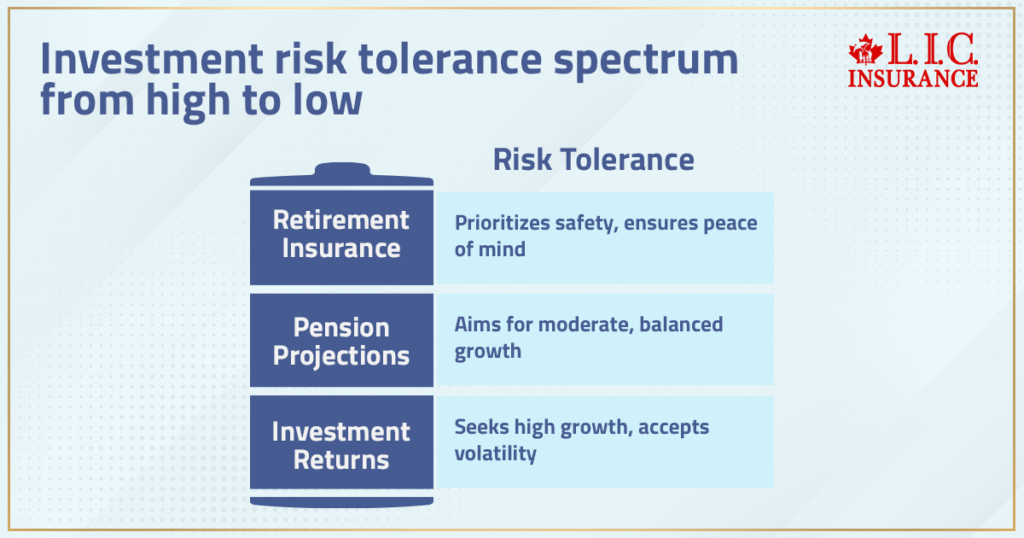- Connect with our licensed Canadian insurance advisors
- Shedule a Call
BASICS
- Is Infinite Banking A Smart Financial Strategy?
- Understanding the Infinite Banking Concept
- Why Infinite Banking Appeals to Canadians Seeking Financial Freedom
- How Infinite Banking Strategy Helps Build Financial Independence
- Challenges and Misconceptions About Infinite Banking
- Who Should Consider Infinite Banking for Financial Freedom?
- How to Start Your Infinite Banking Journey
- Key Advantages of the Infinite Banking Strategy
- A Day-to-Day Struggle: Why More Canadians Are Exploring Infinite Banking
- Potential Drawbacks You Should Know
- The Future of Infinite Banking in Canada
- Is Infinite Banking a Smart Financial Strategy?
COMMON INQUIRIES
- Can I Have Both Short-Term and Long-Term Disability Insurance?
- Should Both Husband and Wife Get Term Life Insurance?
- Can I Change Beneficiaries on My Canadian Term Life Policy?
- What Does Term Life Insurance Cover and Not Cover?
- Does Term Insurance Cover Death?
- What are the advantages of Short-Term Life Insurance?
- Which Is Better, Whole Life Or Term Life Insurance?
- Do Term Life Insurance Rates Go Up?
- Is Term Insurance Better Than a Money Back Policy?
- What’s the Longest Term Life Insurance You Can Get?
- Which is better, Short-Term or Long-Term Insurance? Making the Right Choice
IN THIS ARTICLE
- What is the minimum income for Term Insurance?
- How Does Income Affect Your Term Life Insurance Policy?
- Can You Buy Term Life Insurance Online with a Low Income?
- How Can You Lower Your Term Life Insurance Cost?
- How Much Term Life Insurance Do You Need?
- Can Your Term Life Insurance Policy Be Adjusted Over Time?
- Why Term Life Insurance Is Ideal for Lower-Income Canadians
- Final Thoughts
- More on Term Life Insurance
How Global Economic Trends Are Shaping Canadian Retirement Plans


By Harpreetpuri Puri
CEO & Founder
- 8 min read
- July 14th, 2025
SUMMARY
Global economic shifts are forcing Canadians to rethink how they use their Registered Retirement Savings Plan, Retirement Insurance Plan, and RRSP contribution limit. From inflation risks to fluctuating interest rates, retirement strategies now demand flexibility, layered income solutions, and better planning. With fewer guarantees from traditional pension plans, building a stable financial future requires real conversations, smart asset use, and emotional readiness.
Introduction
What Retirement Looked Like Before Everything Changed
There was a time — not so long ago — when most people thought they had it all figured out.
You bust your tail, save a little each year, and also try not to spend too much. You contribute when you can. Maybe to a workplace pension. Maybe to that Registered Retirement Savings Plan, the bank said you should have. If you were disciplined, you maxed out your RRSP contribution limit whenever you could.
Retirement was the end of a race. Not a gamble.
But more and more these days, people are walking into our office with a distinctly different timbre to their voice. Not a panic, per se, but that uneasy pause when someone doesn’t want to acknowledge that they are questioning everything they have built.
A husband and wife from Brampton, in their early 60s. They came with their numbers, as many do. Spread sheets. Pension statements, a quote they’d received online for some RRSP top-up. They’d done everything right. But they were exhausted, not from working, but from watching the world become less and less reasonable.
And they simply inquired, quietly, “Is this enough anymore?
When Interest Rates Rewrite the Math
No one was seeing this sort of rate spike coming. Not this fast, not this hard. Interest rates matter only when you are purchasing a mortgage,” people think – but no, they don’t.
We’ve seen what it’s done to investment returns. Pension projections. Annuity quotes. GIC ladders that looked perfectly fine two years ago but feel … off. Off by just enough to matter, and which you didn’t account for when you first conceived of your plan.
One client had a retirement insurance policy that our firm had set up for them many years earlier. Whole life. Slow growth, safe, no surprises. And when the market turned, as, of course, their other investments did — that policy? Steady. Boring, even. But it was the one thing they didn’t lose sleep over.
We don’t tell you that just to sell insurance. We say this because people lose sight of the point that high returns do not define safety. It’s about being able to sleep at night while the market falls 1,000 points in a week.

How Pensions Feel Different When You Look Closer
For most of us, we don’t give too much thought to our pension plan until we are retired (or close enough that we can smell the finish line). And we get it. It’s supposed to be the thing that’s on in the background. You spend your time away, and your employer does, and one day it just appears.
But recently, people have asked us to explain what’s in the plan at greater length. As it happens, though, they were counting on something they didn’t quite understand. And when the market disappointed, or when inflation hung around longer than they had hoped, that number they had in their head no longer stretched as far as they had hoped.
One woman — a government employee, mid-50s — came to us because her pension projections just seemed. light. Not shattered, just not designed for the life that she imagined. The figures were the numbers, but the cost of everything else was different. And the thing that shook her the most wasn’t the math. It was the sense that the future had inched quietly past what the past had equipped her to pay for.
How Inflation Eats More Than Just Your Groceries
It’s not just eggs and gas. Inflation nibbles at your savings, your fixed income, and your plans.
We were working with a retired client who subsisted on a blend of pension, annuity and a modest-sized investment account. Five years ago, she was fine. Today, she is just making it work. Not that she was spending beyond her means, but because everything around her suddenly cost a bit more, and her income didn’t grow nearly as quickly.
And sure, inflation isn’t new. But what has changed now is the rapidity of the change. The speed. The persistence. Folks weren’t ready for it to have this much staying power.
You can’t just battle it with higher returns — you need to start reworking the plan. And sometimes that means taking a look at what you already have. Sometimes, that is using the space in your RRSP that you didn’t realize you had. Sometimes it is about shifting some money into something boring and stable, like a retirement insurance contract that isn’t going to collapse each and every time the headlines change.
The Problem with Waiting for the "Right Time"
Many say they’ll return to their plan once things settle down.
They won’t.
Not because they are indifferent, but because there is no such thing as “the right time” anymore. The market does not calm down like it used to. We have clients who have sat there waiting for the right time to move money, adjust their portfolio, rebalance risk, and all they have done is to have become further away from what used to be their own confidence.
One dude — we’ve known him for years — was like, ‘Yeah, I’ll think about it,’ delayed. Rates would tick up, then he’d take a break. Then he dropped again, so he had to pause again. Every pause was logical. None of it felt wrong. But after five years, he’s in arrears. And what he feels worst about isn’t what he lost. It’s what he didn’t do in the meantime.
The Value of One Steady Thing
We say to clients all the time: the point is not to beat the market. It’s to construct something that doesn’t come apart when the world goes awry.
One constant thing is an insurance policy, and even then, not always. Not because it’s exciting, but because it provides you with a baseline. We’ve created plans that have insurance not only for a death benefit, but for the living years. For the guaranteed growth. Because the ability to borrow or draw the light when everything feels shaky.
You don’t necessarily need a sexy investment. You want something that’s reliable at 73, and you’re tired of surprises.
RRSP Room Is Not Just a Number—It's a Tool
Folks approach their RRSP contribution limit as if it were a box to check on a tax form. But it’s more than that. It’s space you’ve earned. And space to nudge your plan in the right direction.
One of our newer clients hadn’t done anything with their RRSP for years. They felt they were “too close to retirement” to make the effort. But after running a quick quote about how much room we have online in our RRSP, we showed them how much they still had — and how they could use that room in retirement to fill a low-risk income stream all the way to the top of a tax bracket without being pushed into a higher one.
Small changes. Smart use of available space. No stress.
You Don't Need a New Plan. You Need a Better Conversation
This is not about ditching everything and starting again. Almost everyone we deal with has something like the bones of a better plan. What they are lacking is the update. The pressure test. The honest conversation.
How does this strategy look if rates fail to fall?
So, how long will this money last if inflation remains high?
What if the pension payments drop below what is anticipated?
We are not asking these questions to alarm people. We ask them so they don’t have to wonder.
The Truth About Guarantees
When many people hear the word “guarantee,” they think it’s code for “low returns.” And sometimes, yes, that’s true. But the objective of a guarantee isn’t growth but confidence.
A guarantee is that your plan will continue to work even if the market crashes. A guarantee means that you still receive income if the bank revises its forecast downward. A warranty is your after-the-fact insurance: As long as you’re around to make things right, your spouse is covered.
We have helped clients layer on guarantees through insured annuities, participating whole life insurance, and structured withdrawals that keep them under clawback thresholds. None of it is flashy. All of it works.
Don't Build Your Future Based on the Past
We’ve told so many clients this lately: your future will not look like your parents’. And that’s OK. But this also means that the tools they used may not behave the same.
A retirement that’s constructed in 2025 has to account for different risks, different behaviours of assets, and different lives. You might live longer. And you might pay more for health care. You may want to help your kids earlier than that.
It’s not for fear of the future. It’s about facing all that with open eyes and a plan.
Real Clients, Real Choices
A couple from Surrey decided to delay selling their cottage when the bottom fell out of the housing market. Instead, they leveraged the equity using a retirement-friendly loan structure that we had arranged, thereby leaving their favourable tax position undisturbed.
An entrepreneur in Mississauga transferred some of his tax-sheltered investments to a permanent policy, providing retirement income and a legacy for his children.
A public sector employee in Toronto topped up her RRSP with a bonus she almost missed — then used some of it to buy an annuity that now funds her essential spending.
These are not radical strategies. Just informed ones. And they are made by having the right conversations at the right time.
Final Thought: You've Built Something—Don't Leave It Vulnerable
You’ve done the work. You’ve saved, contributed, and paid attention. And now you deserve to know whether your plan still stands.
We’re not here to remake everything. What we are here to do is to help you steer what is already in motion. Maybe you need to rebalance. You may need to create a new safety net. Perhaps you just need to hear you’re OK, albeit with actual numbers to back it up.
And if you’re not OK? Last I checked, it’s why we’re here, too.

FAQs: What Canadians Are Asking About Retirement Planning in 2025
We’ve seen some clients consider pushing retirement out a year or two, not out of fear, but to strengthen their plan while rates shift and inflation sticks around. If your retirement income depends heavily on investments, delaying might buy you the flexibility you need. But it’s not always necessary. What matters more is how your income is structured, not just when you stop working.
Yes—but only if it fits your current tax and income situation. If you’re close to retirement, contributing to a Registered Retirement Savings Plan might still help lower this year’s taxes, especially if you expect to be in a lower bracket later. It’s not about age—it’s about how much room you have and how you plan to withdraw. That’s what we help clients think through.
Absolutely. In fact, that’s something we’re doing more often now. Your RRSP helps with tax deferral, and a Retirement Insurance Plan can offer guaranteed income or estate value that isn’t tied to the market. Together, they create balance. It’s not one or the other—it’s how they work side by side.
A lot of Canadians overlook this. Even with provincial coverage, out-of-pocket medical expenses can grow fast after 65. That’s why some clients are using insurance-backed plans or savings buckets outside their RRSP to cover future medical needs. Planning ahead for that category specifically—before it’s urgent—makes all the difference.
You’re not alone. More Canadians are retiring without traditional pensions. We’ve helped many people build private retirement plans using RRSPs, TFSAs, insurance strategies, and annuities. It’s fully possible—you just need to know how to layer things properly so you’re not depending on one income source.
They can be—especially when used the right way. A lot of clients ask about this when longevity becomes a concern. Some annuities offer guaranteed income for life, which removes a lot of risk if your portfolio doesn’t perform or if inflation rises faster than expected. But annuities aren’t one-size-fits-all. Timing, structure, and type matter. That’s where good planning comes in.
We recommend reviewing your full plan at least once a year—and more often if you’re within five years of retirement. Global economic changes are moving quickly, and something that worked even two years ago might not work now. Reviewing doesn’t mean overhauling. Sometimes, it’s just a few small adjustments that make the difference.
This is a common fear, especially for those retiring in the next 10–15 years. While both programs are still strong, it’s wise not to rely on them as your only guaranteed income. We help clients build plans where CPP and OAS are just one layer, so your lifestyle doesn’t depend entirely on government policy.
If your advisor hasn’t mentioned interest rate impacts, inflation strategies, or Retirement Insurance Planning in the last year, that’s a red flag. The best advisors—like our team at Canadian LIC—don’t just manage investments. We adjust full plans based on what’s happening globally and personally.
This happens more than you’d think. One person wants to downsize and save. The other wants to travel and spend more time early on. We help couples build retirement strategies that account for both visions—allocating funds, managing risk, and ensuring both people feel seen. It’s possible to retire on different timelines with one strong plan.
Key Takeaways
- Retirement planning isn’t static anymore. Global trends like rising inflation and interest rates are forcing Canadians to rethink the safety and structure of their retirement strategy.
- RRSP contribution limit is more than a number. It’s a flexible tool that, when used strategically, can lower taxes and create room for long-term income planning—even late in your career.
- Retirement Insurance Plans offer more than death benefits. They’re increasingly used for guaranteed income, portfolio stability, and protecting against volatile market risks.
- Pension plans aren’t bulletproof. Many Canadians are realizing their pension projections may fall short, especially as inflation outpaces expected payouts. It’s critical to understand what’s really inside your pension plan.
- Annuities and permanent insurance can create lifetime stability. For those worried about outliving their savings, layering in guaranteed products helps remove uncertainty without giving up flexibility.
- Reviewing your retirement plan regularly is essential. Annual check-ins—especially within 5 years of retirement—ensure your strategy aligns with shifting market realities and personal needs.
- CPP and OAS should not be your only safety net. Government pensions are helpful but should be treated as one layer of income, not the foundation.
- Emotional readiness matters just as much as financial readiness. Knowing your numbers and how they respond to change helps bring peace of mind—no matter what headlines say.
- A good plan doesn’t require perfection. It requires honest conversations, flexible tools, and guidance from experts who understand today’s market—and your long-term vision.
Sources and Further Reading
- Government of Canada – Registered Retirement Savings Plan (RRSP) Information
https://www.canada.ca/en/revenue-agency/services/tax/individuals/topics/rrsp.html
Official guidance on contribution limits, withdrawals, and tax benefits of RRSPs. - Bank of Canada – Monetary Policy and Interest Rate Trends
https://www.bankofcanada.ca
Updated analysis of economic indicators, interest rate decisions, and inflation reports. - Office of the Superintendent of Financial Institutions (OSFI) – Canadian Pension Plan Sustainability Reports
https://www.osfi-bsif.gc.ca
Insights into the funding and long-term outlook of Canadian pension plans. - Statistics Canada – Inflation and Retirement Trends
https://www150.statcan.gc.ca
Key data on consumer price index (CPI), cost of living, and Canadian retirement patterns. - Canadian Life and Health Insurance Association (CLHIA) – Retirement Insurance Resources
https://www.clhia.ca
Explains insurance solutions that support retirement income, including annuities and permanent policies. - Pension Investment Association of Canada (PIAC)
https://www.piacweb.org
Industry perspectives on asset allocation, investment risk, and good governance in pension management. - Financial Consumer Agency of Canada – Budgeting and Financial Tools for Retirement
https://www.canada.ca/en/financial-consumer-agency.html
Tools and calculators for estimating retirement income needs and comparing financial options. - Canadian Institute of Actuaries – Retirement Age and Longevity Reports
https://www.cia-ica.ca
Research on increasing lifespans and how they affect retirement income sustainability. - Canadian Association of Retired Persons (CARP) – Retirement Advocacy and Insights
https://www.carp.ca
Perspectives on retirement readiness, health care concerns, and income security for older Canadians. - Globe and Mail – Personal Finance & Retirement Section
https://www.theglobeandmail.com/investing/personal-finance/
Timely articles on investing trends, inflation concerns, and personal stories from Canadians preparing for retirement.
Feedback Questionnaire:
We’d love to hear from you. Global economic changes are hitting everyone differently, and your experience matters. Please take 2 minutes to share where you’re at—we’re listening.
Thank you for your time!
Your involvement will help us create more relevant and meaningful content that empowers Canadians to better understand how shifts in the international economy are impacting their retirement plans and overall financial health.
IN THIS ARTICLE
- How Global Economic Trends Are Shaping Canadian Retirement Plans
- When Interest Rates Rewrite the Math
- How Pensions Feel Different When You Look Closer
- How Inflation Eats More Than Just Your Groceries
- The Problem with Waiting for the "Right Time"
- The Value of One Steady Thing
- RRSP Room Is Not Just a Number—It's a Tool
- You Don't Need a New Plan. You Need a Better Conversation
- The Truth About Guarantees
- Don't Build Your Future Based on the Past
- Real Clients, Real Choices
- Final Thought: You've Built Something—Don't Leave It Vulnerable
Sign-in to CanadianLIC
Verify OTP

